A magnificent estate in Devon that offers the chance to own over 120 acres of Dartmoor National Nature Reserve
With previous owners including Bishops, Earls and Queen Elizabeth I through the Crown's estate, Yarner House has had a colourful past. The sprawling property, most recently run as a holiday retreat and wedding venue is now on the market...and there's a lot on offer.


Just launched onto the market via Country Life is the historic, 247-acre Yarner House estate on the north-eastern slopes of Haytor Down, three miles west of Bovey Tracey on the eastern edge of the Dartmoor National Park.
Edward Clarkson of Knight Frank’s Exeter office quotes a guide price of £5.5 million for the Devon estate as a whole, or £5m for Grade II-listed Yarner House with its land, buildings and one cottage; the Lodge Cottage is available separately for £500,000.

Yarner House and the adjoining Yarner Wood, a 365-acre block of ancient woodland managed by Natural England as part of the East Dartmoor National Nature Reserve, were both once part of the manor of Bovey Tracey granted by William the Conqueror to Geoffrey de Mowbray, Bishop of Coutances.
On de Mowbray’s death in 1093, his nephew, Robert Mowbray, Earl of Northumberland, inherited, but later defied the king, which led to the seizure of his estates in 1095.

Over time, ownership of the Bovey Tracey estates reverted to the Crown as favourites came and went, until, in the 16th century, a succession of costly wars left Tudor monarchs strapped for cash.
Elizabeth I began to sell off Crown properties and, in 1578, the Yarner estate was bought by Gregory Sprint, a canny lawyer with good Court connections, who swiftly resold it at a profit.

Little is known of the early history of Yarner House itself, although its 1986 listing describes it as a ‘large house, 17th century or earlier, remodelled and considerably enlarged in the 19th-century.
Sign up for the Country Life Newsletter
Exquisite houses, the beauty of Nature, and how to get the most from your life, straight to your inbox.
L-shaped, with slated roofs mostly concealed behind high crenellated parapets, it occupies a prominent site nearly 800ft above sea-level, the old house being contained in a square block at the south-east end’.
According to Devon records, this ‘old house’ was built, probably on the site of an old hunting lodge, by Moses Stoneham, the son of a Norfolk rector, who came to Devon in about 1650 and died at Yarner in 1678.

Research carried out by Devon historian Frances Billinge shows that, during the 18th century, the Yarner estate was mortgaged, leased or used as collateral for loans by 28 different groups of owners.
In the 19th century, more than 30 groups of owners became involved as mineral rights were separated from the estate and shafts were dug to mine for copper. However, the mining venture proved unsuccessful and, when the mine closed in 1864, Yarner went back to being a sporting country estate.

In 1878, the estate was acquired by Oxford graduate Henry Chadwick, who greatly improved the property and when, in 1902, he offered it for sale, it was described as ‘a mansion with three lodges and over 435 acres, and a sporting estate’.
The new owner was Chadwick’s neighbour, Harry Trelawney Eve, an important figure in the area and a Liberal MP, who was knighted in 1907.
Eve’s son, William, was killed in action in 1917 and, in 1919, Yarner was sold to the sitting tenant, Richard Lee, for £10,000. Upon Lee’s death in 1923, the estate passed to his wife, daughter and son-in-law Capt John Catterall Leach RN, who was killed in action in 1941.
Yarner was put up for sale again in 1950 and, in 1952, was divided into two when Yarner Wood was sold to the Nature Conservancy to become one of the first of six national nature reserves.

In 1964, present owners the Holman family bought the Yarner House estate, comprising the impressive main house in its glorious hillside setting surrounded by magnificent terraced gardens, a farm with a farmhouse, farm buildings and 71 acres of pasture, some 30 acres of mixed woodland and 138 acres of moorland within the Dartmoor National Park.
In recent years, the house has been run as a successful holiday retreat and wedding venue.

Romantic Yarner House stands at the end of a long drive that meanders through the land before arriving at the entrance where a wide lawned terrace reveals the compelling beauty of the Wray Valley below.
The house offers 6,206sq ft of accommodation on three floors, including an inner hall that doubles as a dining room, a light-filled Scandinavian hall ideal for entertaining, a study, sitting room and kitchen/breakfast room, with a spacious master suite plus six further bedrooms and bathrooms on the floors above.
Outside in the grounds, the Victorian tennis court needs updating, but surely boasts the finest site of any court anywhere in the South-West.
Yarner House is currently for sale via Knight Frank for £5.5 million — see more pictures, or enquire with the agent for further details.
Bovey Tracey: What you need to know
Location: Bovey Tracey is a small, historic market town located approximately 7 miles from Newton Abbot and approximately 15 miles south west of Exeter. There are main line rail services at both Newton Abbot and Exeter St Davis which provide links to London and the north and the A38 which connects to the A303 and M5.
Atmosphere: Bovey Tracey is known as one of the main gateways to Dartmoor and is set on the River Bovey. It is popular with visitors and enjoys a bustling town with local shops, primary schools and a historic church.
Things to do: Bovey Tracey is wonderfully situated for those wishing to escape to the moors and enjoy the many walks and hikes on offer. Likewise, in town, The House of Marbles — a museum/ glassworks/cafe/shop is a popular family attraction.
Schools: The local primary schools are Bovey Tracey Primary School and Little Acons Montessori, with more options for both primary and secondary near Newton Abbot and the surrounding area — notably, Newton Abbot College and Stover School.
See more property for sale in the area.
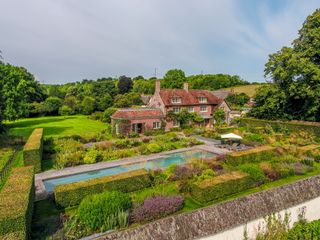
Credit: Strutt and Parker
Best country houses for sale this week
An irresistible West Country cottage and a magnificent Cumbrian country house make our pick of the finest country houses for
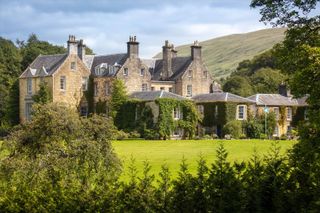
Spectacular Scottish castles and estates for sale
A look at the finest castles, country houses and estates for sale in Scotland today.
-
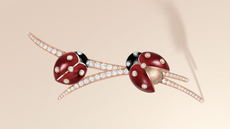 The century-old enamelling technique used to create Van Cleef's lucky ladybird brooch — which has something in common with Country Life
The century-old enamelling technique used to create Van Cleef's lucky ladybird brooch — which has something in common with Country LifeThe technique used in the jeweller's Geneva workshop has been put to good use in its latest creation.
By Hetty Lintell Published
-
 ‘The best sleep in the sky’: What it’s like to fly in United’s Polaris cabin, approved by American icon Martha Stewart
‘The best sleep in the sky’: What it’s like to fly in United’s Polaris cabin, approved by American icon Martha StewartUnited’s Business Class cabin goes by the name Polaris and Martha Stewart is a fan. So, how does it fare?
By Rosie Paterson Published
-
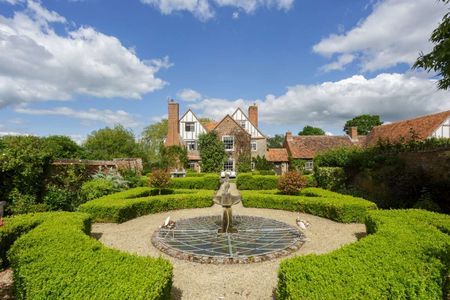 18 magnificent homes for sale from £550k to £20 million, as seen in Country Life
18 magnificent homes for sale from £550k to £20 million, as seen in Country LifeFrom a charming thatched cottage to a 300-acre estate with its own vineyard, here's our pick of places to come to the market via Country Life of late.
By Toby Keel Published
-
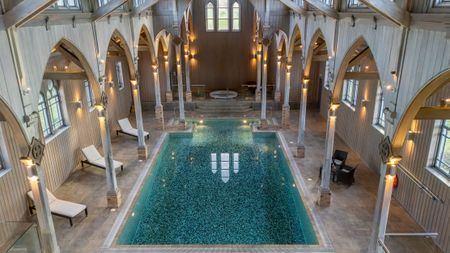 If heaven is on earth, it might be in this home with a converted chapel that is now a swimming pool
If heaven is on earth, it might be in this home with a converted chapel that is now a swimming pool5 Wood Barton Town House is part of an exclusive 80-acre development in Devon that also comes with fishing rights on the River Avon and four bedrooms.
By James Fisher Published
-
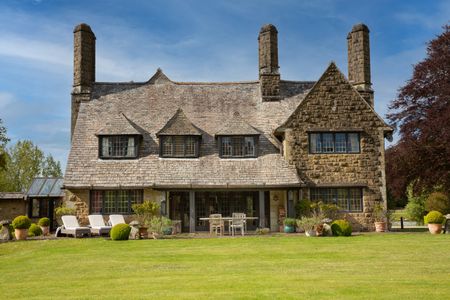 The sounds of spring and stained glass in an Arts-and-Crafts masterpiece in Dorset
The sounds of spring and stained glass in an Arts-and-Crafts masterpiece in DorsetWith 35 acres, more than 10 bedrooms, a swimming pool and tennis court, Winterfield has it all.
By James Fisher Published
-
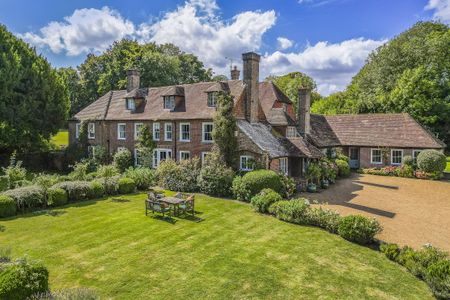 An eight-bedroom wonder in East Sussex where the outdoors are an adventure
An eight-bedroom wonder in East Sussex where the outdoors are an adventureThe interiors of Old Middleton are pretty good too.
By Arabella Youens Published
-
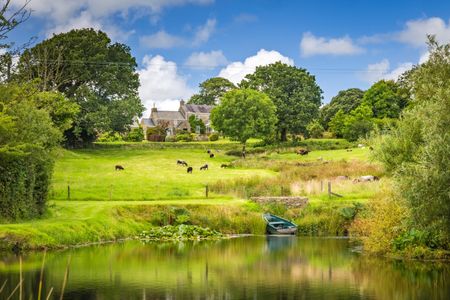 A lakeside farmhouse on the market in the beautiful heart of Pembrokeshire
A lakeside farmhouse on the market in the beautiful heart of PembrokeshireA lake, streams, 15 acres and five bedrooms. Rogershook might have it all.
By James Fisher Published
-
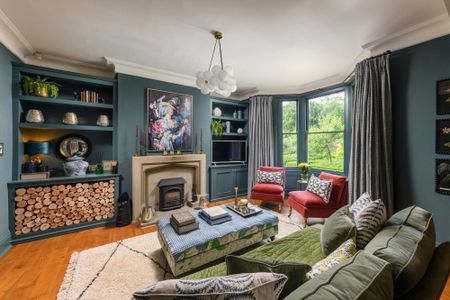 An idyllic countryside home that's light, spacious and comes with a Grade II-listed folly
An idyllic countryside home that's light, spacious and comes with a Grade II-listed follyHagg House is a gorgeous family home that just happens to have a miniature castle in the gardens. Annabel Dixon explains more.
By Annabel Dixon Published
-
 A historic villa for sale on the Via Nomentana worthy of Rome's rich history
A historic villa for sale on the Via Nomentana worthy of Rome's rich historyThree floors, lots of balconies, and a private garden in one of Rome's loveliest neighbourhoods.
By James Fisher Published
-
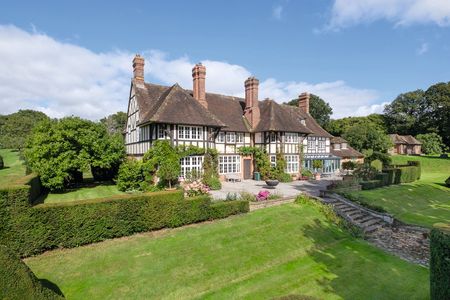 Eight bedrooms of unlisted Edwardian elegance with sweeping views of Somerset
Eight bedrooms of unlisted Edwardian elegance with sweeping views of SomersetAshton House sits near the market town of Chard and comes with a wealth of amenities both inside and out.
By Arabella Youens Published

